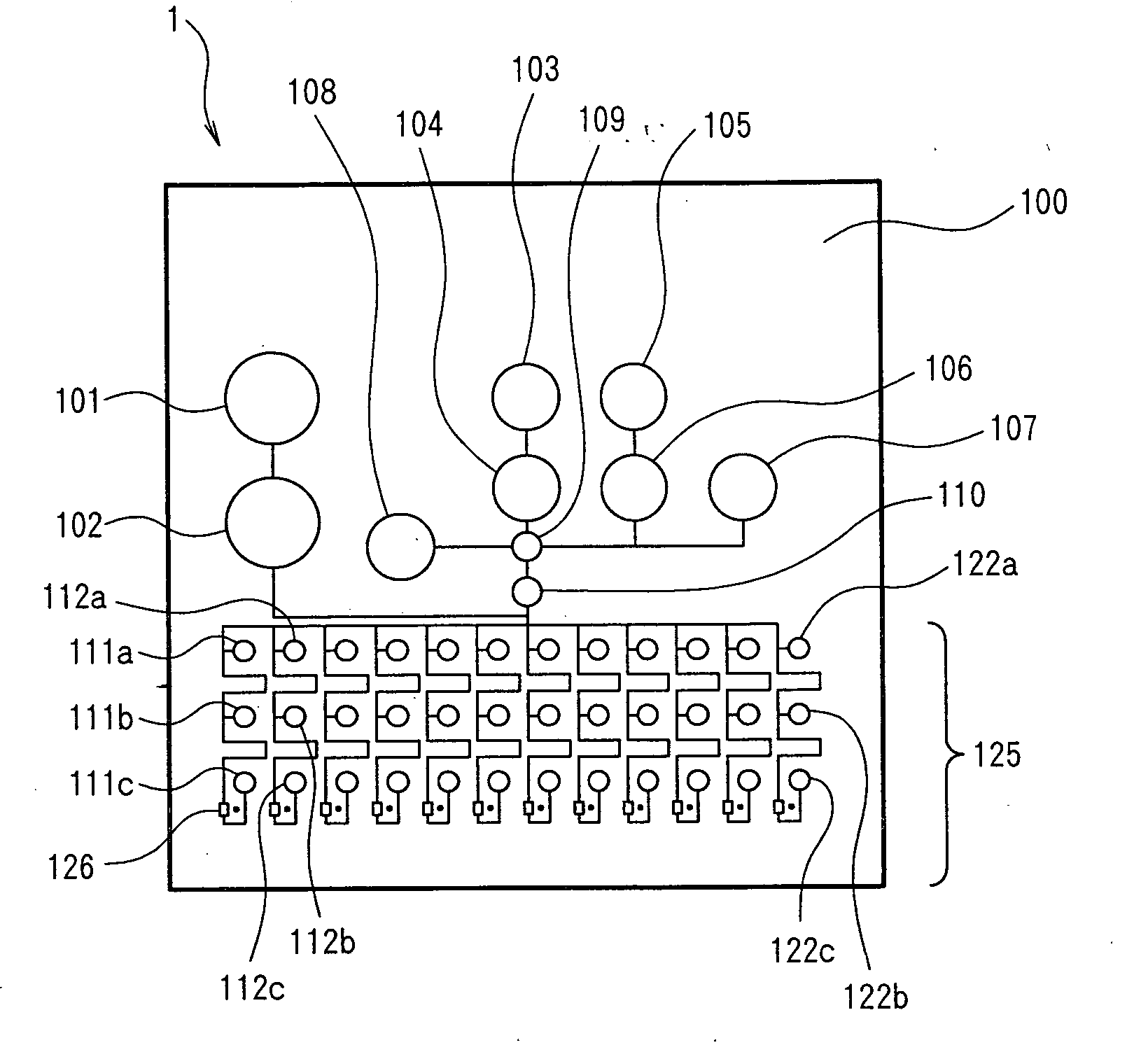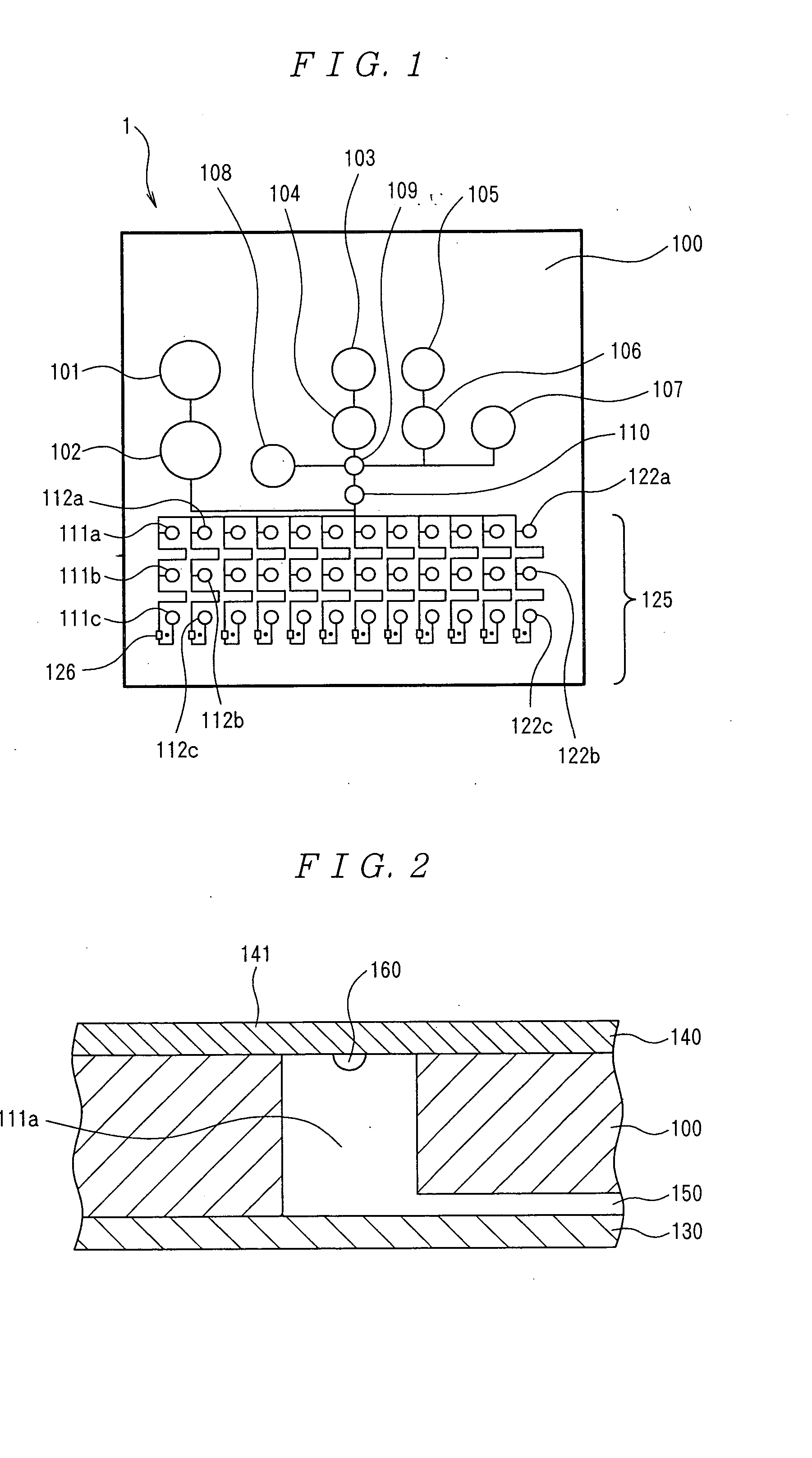Analyzing cartridge and liquid feed control device
- Summary
- Abstract
- Description
- Claims
- Application Information
AI Technical Summary
Benefits of technology
Problems solved by technology
Method used
Image
Examples
experimental example 1
Measurement of Anti-Water Pressure of Hydrophobic Membrane
[0306] The anti-water pressure is measured at each average pore size for hydrophobic membranes of various kinds of materials. For the laboratory device for carrying out measurements, a device in which a disposable filter holder 810 with a membrane 800 set therein is attached to the tip of a syringe 820 with an inner diameter of 5 mm. The effective diameter of the membrane 800 is 3 mm. Furthermore, Figure (b) in FIG. 10 is a magnified sectional view of the filter holder 810 and the tip of the syringe 820.
[0307] For the measurement of anti-water pressure, the syringe 820 is first put in a test solution 830, and the syringe 820 is pushed against the a scale 840 while the syringe 820 is kept standing upright with its tip pointing upward, thereby carrying out a measurement. The air in the syringe 820 is pushed to the outside through the membrane 800, and a test solution 830 starts to seep through the membrane 800 if the syringe ...
experimental 2
[0311] Commercially available reagent kits for use in diagnosis of blood components were used to examine dissolving time of reagents. A large number of holes with the diameter of 2 mm were bore in a PMMA plate with thickness of 2 mm, a PTFE porous membrane was bonded to the one face of the PMMA plate in a same way as Example 4 described later, and 2 μl of each reagent solution was put in the hole, followed by air-drying the same for 2 hours. The reagent kits that were used are as follows. [0312] GOT, GPT: TA-LN Kainos (Kainos Co., Ltd.). [0313] ALP: ALP Kainos (Kainos Co., Ltd.). [0314]γGTP: EspaγGTP (N) (Nipro Co., Ltd.) and Aquaauto Kainos γGTP (Kainos Co., Ltd.). [0315] t-Bil: HA Test Wako (Wako Pure Chemical Industries, Ltd.) and Espa TB (Nipro Co., Ltd.). [0316] T. Chol: HA Test Wako (Wako Pure Chemical Industries, Ltd.). [0317] TG: HA Test Wako (Wako Pure Chemical Industries, Ltd.) and Aquaauto Kainos TG (Kainos Co., Ltd.). [0318] LDH: LDH Kainos (K...
example 1
[0328] An example in which quantitative analysis of total cholesterol in blood serum was carried out using an analyzing cartridge with two reagents of the total cholesterol detection kid (Trade Name: Cholesterol E-HA Test Wako manufactured by Wako Pure Chemical Industries, Ltd.), a reagent dissolving liquid and a diluent encapsulated therein, and the standard serum (Determiner for Measurement of Standard Serum Lipid manufactured by Kyowa Medix Co., Ltd.) was used as a calibration solution to correct the result of analysis will be described. Furthermore, for the method of feeding the liquid, a method using electroosomosis flows by application of voltage was used.
[0329] The analyzing cartridge 4 that was used and analysis operations will be described referring to the drawings. FIG. 11 shows a channel pattern of a plane member 900, and FIG. 12 shows the back face (face provided with no grooves) of the plane member 900 of FIG. 11. And, FIG. 13 is a sectional view of a portion of a reag...
PUM
 Login to View More
Login to View More Abstract
Description
Claims
Application Information
 Login to View More
Login to View More - R&D
- Intellectual Property
- Life Sciences
- Materials
- Tech Scout
- Unparalleled Data Quality
- Higher Quality Content
- 60% Fewer Hallucinations
Browse by: Latest US Patents, China's latest patents, Technical Efficacy Thesaurus, Application Domain, Technology Topic, Popular Technical Reports.
© 2025 PatSnap. All rights reserved.Legal|Privacy policy|Modern Slavery Act Transparency Statement|Sitemap|About US| Contact US: help@patsnap.com



